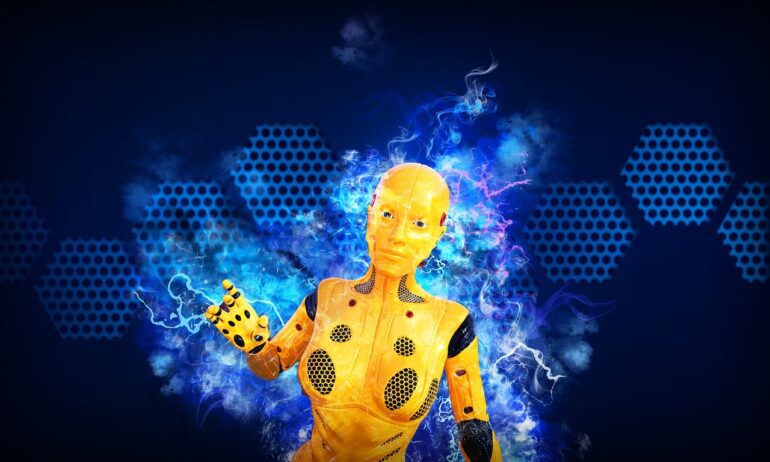TL;DR:
- Humanoid robots have evolved from mechanistic tools to empathetic companions, educators, and even medical aides.
- Advanced sensors, AI, and machine learning enable these robots to perceive, respond, and adapt with remarkable precision.
- Robots like Sophia by Hanson Robotics showcase lifelike appearance, facial recognition, and even humor.
- Humanoid robots address societal challenges, providing companionship for the elderly and aiding mental health.
- The “uncanny valley” challenge arises as robots approach human-like appearances, impacting emotional connections.
- These robots find integration as educators, enhancing learning environments and teaching essential skills.
- Ethical considerations emerge regarding emotional bonds with machines and the responsibilities of creators and users.
- Humanoid robots have also made advancements in medical procedures, such as the Da Vinci Surgical System.
- Their potential impact on society is expansive, reshaping technology interaction and redefining the essence of humanity.
Main AI News:
In a landscape where the relentless march of technology remains ceaseless, there exists a domain that both captivates our intrigue and stirs our apprehension: humanoid robots. These mechanized entities, meticulously crafted to emulate human physiology and conduct, are transcending their mechanistic origins to assume roles as companions, educators, and confidantes. The demarcation between the organic and the synthetic is progressively eroding, thanks to the unprecedented stride of humanoid robots in reshaping the terrain of social interaction.
A Voyage from Mechanization to Emotional Cognizance
No longer are robots confined to their erstwhile role as mere cogs in assembly line machinery. The arrival of cutting-edge sensors, artificial intelligence, and machine learning has propelled humanoid robots into an epoch where their discernment and responsiveness to their surroundings border on the uncanny. Equipped with facial recognition algorithms, modulated vocal capabilities, and a semblance of empathy, these robots now decipher human sentiments and seamlessly adapt their demeanor.
Enter Sophia: An Epitome of Transformation. Engineered by the Hong Kong-based Hanson Robotics, Sophia embodies the potential of such evolution. Engaging in conversations, identifying countenances, and even interjecting humor, Sophia’s lifelike visage and expressive features epitomize the astonishing evolution of robotics. This progress prompts contemplation about the ethical and emotional dimensions inherent in interactions with these marvels of machinery.
Navigating the Vortex of Solitude through Robotic Companionship
The emergence of humanoid robots assumes a timely significance as global societies grapple with the specter of isolation and desolation. These automatons demonstrate their potential as companions to the elderly, those grappling with mobility limitations, and individuals battling mental health tribulations. Paro, a robotic semblance of a seal, has been an unequivocal success in nursing homes, mollifying distress and fostering avenues for social engagement.
The Quandary of the “Uncanny Valley”
However, the voyage towards seamless human-robot interplay encounters its share of hurdles. The hypothesis of the “uncanny valley” posits that our emotional response towards robots, as they emulate human attributes, ascends until it peaks at a juncture where they appear almost human yet exhibit subtle disparities. This juncture induces a disconcerting sensation. Surmounting this chasm demands not just technological advancements, but also an intimate comprehension of the intricacies of human psychology. Continual refinement of the design and demeanor of humanoid robots persists as researchers strive to enhance their relatability whilst circumventing the discomfiting factor that can impede acceptance.
The Pedagogical Interface
Humanoid robots encompass a role that transcends mere companionship – they function as educators. Their capacity to engage and calibrate to the individual educational requisites of students has fostered their assimilation into classrooms worldwide. These automatons fashion dynamic learning environments, rendering subjects such as coding and mathematics accessible and gratifying. A prime instance lies in the NAO robot, embraced as an educational aide in schools, nurturing proficiencies that stand pivotal in the digital age.
Ethical Nexus in Human-Robot Alliances
In the complexity of burgeoning human-robot interplay, ethical quandaries materialize. Are we nurturing a realm where humans form emotional ties with machines, conceivably superseding authentic human connections? The discourse concerning the moral ramifications of human-robot affiliations spans the domains of consent, privacy, and the ethical onus resting upon creators and users alike.
Humanoid Robots as Surgical Pioneers: The Revolution of Open Heart Procedures
Consider the Da Vinci Surgical System – an exemplar of the synergy between robotics and medicine, adeptly orchestrating intricate surgeries with unparalleled precision. This union not only underscores the potential for robots to synergize with human practitioners but also underscores the remarkable headway at the nexus of technology and healthcare.
The Trajectory Unveiled
The trajectory of humanoid robots and their indelible impact on social dynamics and beyond gallops at a breakneck pace. While these automatons have already etched their presence across an array of industries spanning healthcare to entertainment, their latent capacities remain a vast frontier, largely uncharted. We stand at the cusp of a prospective paradigm shift, where these entities could transfigure not only our interface with technology but also our introspection on identity and the nature of consciousness.
Humanoid robots transcend the mere label of “machines” – they function as catalysts, sparking profound ruminations, instigating technological breakthroughs, and prompting an imaginative reevaluation of the very essence of humanity. As their ties with us delve deeper, these robots proffer inquiries of staggering depth, casting a spotlight on the enigma of identity, emotion, and the intricate choreography between the biological and the synthetic. The bridge they construct spans not just the realm of interaction, but also one of healing, ushering us closer to a harmonious coexistence of mankind and machinery in the times that lie ahead.
Conclusion:
The rapid evolution of humanoid robots signifies a transformative shift in various industries, including healthcare, education, and social engagement. The intersection of technology and human connection is reaching unprecedented levels, opening avenues for innovation and ethical contemplation. The market can anticipate increased demand for humanoid robots as companions, educators, and medical aids, along with the necessity for robust ethical guidelines to navigate this novel era of human-robot interaction.

